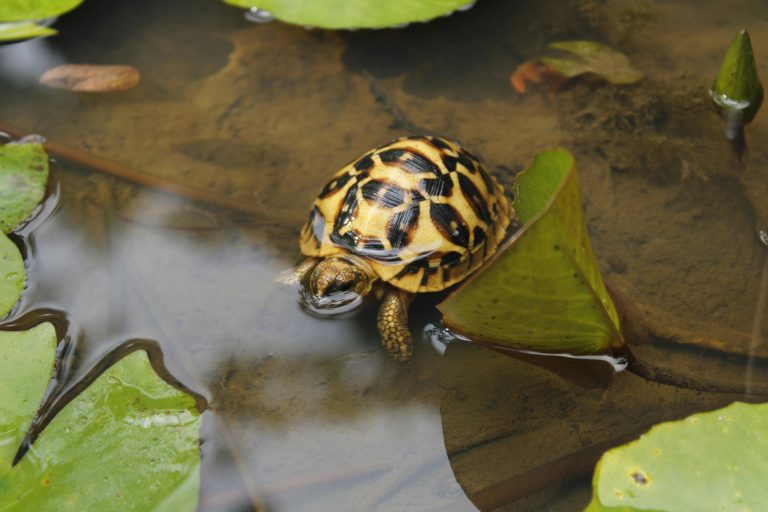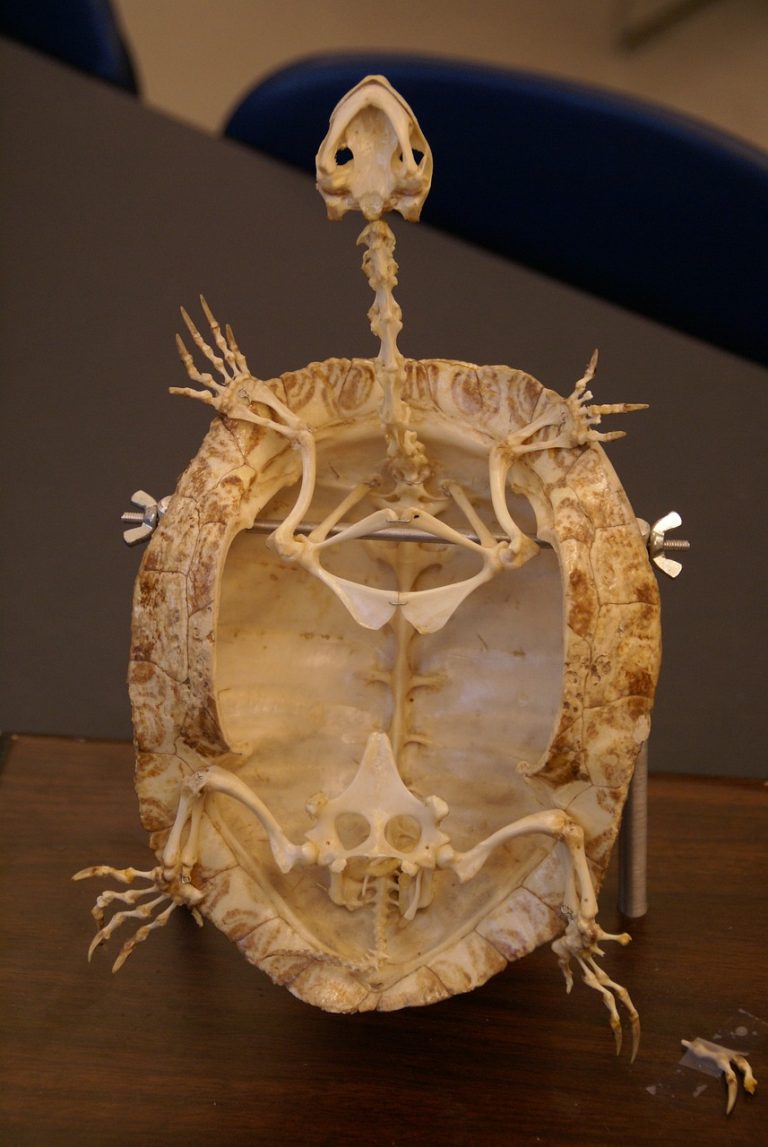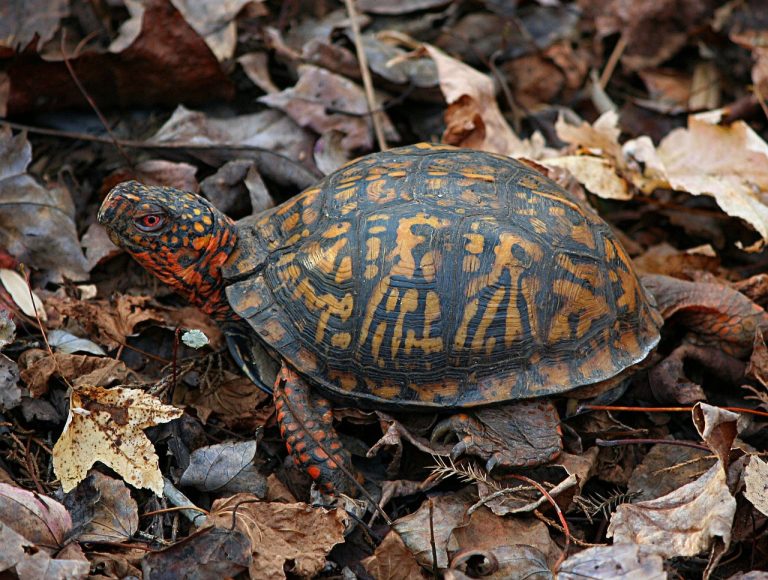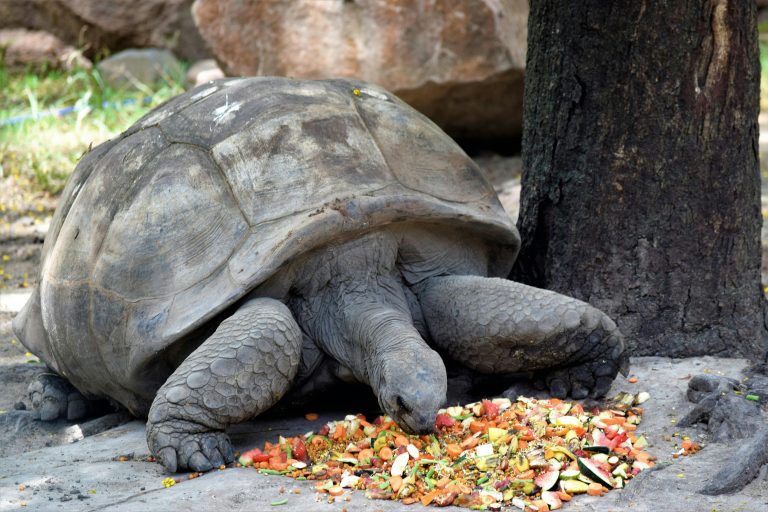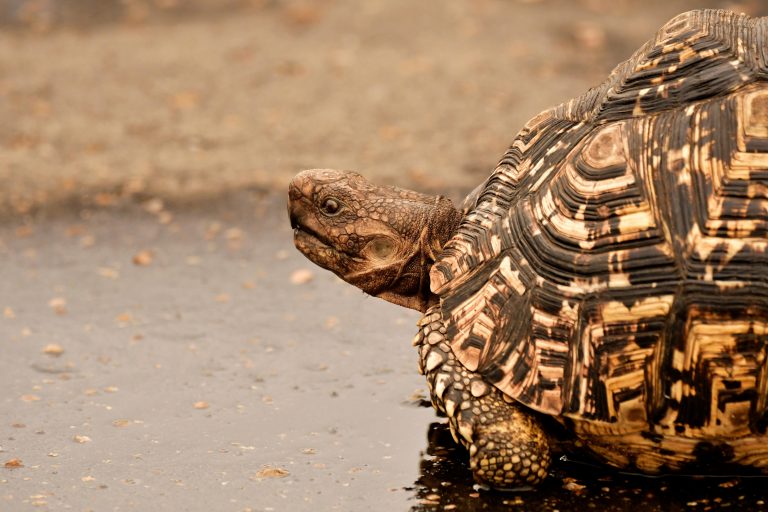Do Tortoises Like To Climb?
You might be taken aback the first time you catch sight of your tortoise scaling a rock or a log. But don’t be too surprised—believe it or not, tortoises are actually pretty adept climbers. It’s something you’ll have to get used to! But have you ever wondered why they do it? Do they just enjoy the challenge?
Well, for tortoises, climbing isn’t just about scaling heights for the thrill of it. It can be a form of entertainment for them, sure, but sometimes it’s more than that—it’s about survival. In cramped or stressful environments, like overcrowded pens or when they’re facing hunger, climbing out of their habitat might be their way of coping.
So, if you find your tortoise indulging in some vertical exploration, it’s worth considering what might be prompting this behavior. Understanding your pet’s needs and behaviors is key to providing them with the best care possible.

See more about the tortoise’s climbing nature is given below.
Can Tortoises Climb?
There’s this common misconception floating around that tortoises are incapable of climbing. Maybe it’s because of their slow-moving nature and their hefty build that people tend to think this way. We tend to picture them as creatures strictly confined to solid ground, ambling along flat surfaces at their own leisurely pace.
But here’s the truth: tortoises are actually surprisingly adept climbers. They’ll tackle all sorts of obstacles, from stairs and fences to ramps, trees, cupboards—you name it. It’s quite a sight to see them maneuvering their way up, taking those deliberate, careful steps to conquer even the steepest surfaces.
However, there’s a catch. While they may be skilled climbers, tortoises aren’t exactly built for scaling sheer walls or rocks. Their grip and balance just aren’t cut out for it. They’re more suited to handling gentle slopes rather than vertical cliffs.
Similarly, they have their limits when it comes to heights. They’re not going to be scaling skyscrapers anytime soon. Their climbing adventures are typically confined to things like rocky decorations, enclosure walls, logs, or outdoor fences. And if they get a bit too ambitious and try to push their limits, they risk losing their balance due to their unique body proportions.
Interestingly, while tortoises may struggle a bit when it comes to ascending, they’re surprisingly graceful when it comes to descending. But that doesn’t mean it’s always smooth sailing—there’s still a chance they could take a tumble and end up hurting themselves, especially if they’re moving too quickly for their own good.
Why Do Tortoises Climb?
Certainly, while we can’t peer into the minds of tortoises to understand their motives firsthand, scientists have taken a closer look at their behavior and offered some plausible explanations for their climbing antics. Here’s a breakdown of what they’ve uncovered:
- Sensing The Surroundings: Climbing to higher vantage points within their habitat could be a means for tortoises to better navigate their surroundings. With their keen sense of direction, ascending obstacles helps them mentally map out important locations like burrows, foraging spots, and water sources.
- Congested Housing System: Tortoises thrive in spacious environments, and cramped living quarters can take a toll on their well-being. In overcrowded habitats, stress levels rise, leading to territorial disputes among tortoises. Weaker individuals may feel compelled to seek an escape route, utilizing their climbing skills to break free.
- Are The Walls Low?: Tortoises are naturally curious and adventurous creatures. With low fencing or enclosure walls, they may see an opportunity for exploration beyond their confines. To prevent escape attempts, it’s advisable to erect barriers at least 12 inches high.
- The Glass Enclosure Is The Culprit!: Glass tanks, despite their transparency, can confuse tortoises about the boundaries of their enclosure. Frustrated by their failed attempts to break free, they may resort to climbing as a means of escape. Opting for opaque enclosures can help alleviate this issue.
- It’s Just Hunger!: In captivity, tortoises rely entirely on their owners for sustenance. When deprived of food for extended periods, they may resort to desperate measures, including climbing walls in search of sustenance.
- The Environment Is New To The Pets!: Tortoises may exhibit heightened climbing behavior when introduced to a new environment. It’s their way of familiarizing themselves with their surroundings, typically taking a few weeks to settle in.
- Hostile & Stressful Environment: Just like us, tortoises seek security and comfort. Stressors such as cramped living spaces, improper temperatures, and noisy surroundings can trigger escape attempts as they seek refuge elsewhere.
- Just Looking For A Partner: During mating seasons, tortoises can become restless and display heightened activity, including attempts to climb out of their enclosures in search of potential mates.
- It’s A Game For Them: Contrary to popular belief, tortoises are intelligent creatures capable of enjoying games. Engaging in activities like climbing rocks or chasing balls provides them with mental stimulation and entertainment.
- Your Tortoise Is Born Climber: Some tortoise species, like Russian or Horsefield tortoises, exhibit natural climbing tendencies purely for recreational purposes. It’s simply in their nature to explore and conquer their surroundings, even if it’s just for fun.

Do Tortoises Enjoy Climbing?
Absolutely, when it comes to understanding why tortoises climb, there’s no one-size-fits-all answer. It really depends on the situation.
You see, tortoises are naturally curious creatures with a knack for climbing. They’ll happily ascend any steep surface they encounter, whether it’s a rock, a fence, or a wall. For them, it’s not just about reaching new heights—it’s a form of amusement and a chance to give their muscles a good workout.
So, in many cases, climbing is indeed a joyous activity for tortoises. They relish the challenge and the sense of accomplishment that comes with scaling new heights.
However, there’s another side to the story. Climbing can sometimes be a sign that something’s amiss in a tortoise’s life. If they’re living in less-than-ideal conditions or feeling frustrated by their environment, they might attempt to escape. In these instances, climbing isn’t a form of entertainment—it’s a survival instinct kicking in.
So, while climbing can certainly bring joy to tortoises, it’s essential to pay attention to the context. It could be a lighthearted adventure or a cry for help, depending on the circumstances.
How High Can Tortoises Climb?
Don’t expect a tortoise to pull off any Spider-Man stunts on a towering wall. They lack the tiny burrs and hooks on their feet that some creatures use to cling to surfaces. Instead, tortoises rely on their sharp claws to grip onto the wall securely enough to maintain their balance.
Taking into account their weight, body proportions, and strength, tortoises typically cap out at scaling a 5-foot wall on average. Smaller tortoises might manage only 2 to 3 feet, while the larger ones could potentially conquer an 8-foot wall or tree.
But here’s the thing: the angle of the slope plays a significant role in a tortoise’s climbing capabilities. If the wall or tree is too steep, they risk toppling backward. Tortoises are much more at home on gently sloped surfaces. With their low center of gravity, they find it easier to navigate climbs on these less daunting angles.
What Can Tortoises Climb?
Sure thing! It’s quite fascinating to observe the varied climbing abilities of tortoises. Here’s a glimpse into the diverse surfaces they’re known to conquer:
- Trees:
Russian and African tortoises showcase impressive climbing skills, even in their natural habitats. While it might seem peculiar, these tortoises have been spotted ascending trees. Whether it’s for the thrill of the climb or to reach tempting fruits and leaves, they’re not afraid to explore vertically. It’s worth noting that tortoises prefer trees that are gently angled rather than upright. - Stairs:
Scaling stairs can be a bit daunting for tortoises, given the steep angle. However, they can navigate slightly inclined stairs with relative ease. Nonetheless, stairs pose significant risks to tortoises, and accidents can happen at any moment, making them a hazardous terrain for these creatures. - Fences:
Despite their flat and steep nature, tortoises effortlessly ascend full-height fences. Meshed chicken wire fencing provides ideal handholds for them, facilitating their escape to the other side. It’s essential for tortoise owners to secure their enclosures adequately to prevent any unauthorized excursions. - Ramps:
Ramps are a tortoise’s best friend, offering a slightly inclined platform for easy navigation. Many keepers incorporate ramps into their pets’ enclosures to provide seamless access to elevated areas. Tortoises appreciate the convenience of these inclined surfaces, making their movement within the habitat effortless. - Walls:
Climbing smooth-surfaced walls poses a challenge for tortoises. However, if the walls feature meshed materials, tortoises can adeptly mount them. It’s crucial for tortoise owners to reinforce the barriers and walls of their habitats to thwart any escape attempts by their adventurous pets.
From trees to ramps, tortoises exhibit remarkable climbing abilities across a range of surfaces, adding an element of intrigue to their behavior and capabilities.
How To Stop My Tortoises From Climbing?
Indeed, climbing can often be a source of joy and entertainment for tortoises, akin to a playful game. Providing them with ample opportunities to indulge in this natural behavior can enhance their overall well-being. Whether it’s large rocks, overturned cardboard boxes, or purpose-built ramps, these additions to their habitat can encourage and enrich their climbing experiences.
However, it’s crucial to recognize that climbing can also signal underlying issues if done in excess or in an attempt to escape their enclosure. This behavior may stem from dissatisfaction with their living conditions, such as a cramped tank, stress, inadequate food supply, or constant disturbances.
To mitigate the risk of escape attempts and ensure the happiness and safety of your tortoise, here are some preventive measures you can take:
- Provide a spacious enclosure: Ensure that your tortoise has ample room to move around and explore, reducing the urge to seek escape routes.
- Create hiding spots: Incorporate various hiding spots within the enclosure to give your tortoise opportunities for solitude and relaxation when needed.
- Offer toys and enrichment: Introduce toys and environmental enrichment to keep your tortoise mentally stimulated and engaged, reducing the likelihood of boredom-driven escape attempts.
- Maintain optimal conditions: Monitor and maintain the appropriate temperature and humidity levels within the enclosure to ensure your tortoise’s comfort and well-being.
- Address aggression in community habitats: If housing multiple tortoises together, keep an eye out for any signs of bullying or aggression, which can induce stress and prompt escape behavior in the affected individuals.
- Ensure adequate nutrition: Avoid intentionally starving your tortoise, and if you’re away for an extended period, consider using an automatic feeder to ensure they receive their required meals.
By addressing these factors and providing a nurturing environment that meets their physical and psychological needs, you can help prevent unwanted escape attempts while fostering a happy and contented life for your tortoise companion.
Conclusion
It seems like you intended to mention an attached article, but unfortunately, I cannot access or view any attachments. However, if you provide me with the details or key points from the article, I’d be more than happy to discuss and elaborate on the climbing behavior of turtles and how it compares to that of tortoises.
![Turtle Vs. Tortoise Vs. Terrapin [Difference Chart]](https://spreadhapiness.com/wp-content/uploads/2024/04/terrapin-1-768x576.jpg)
